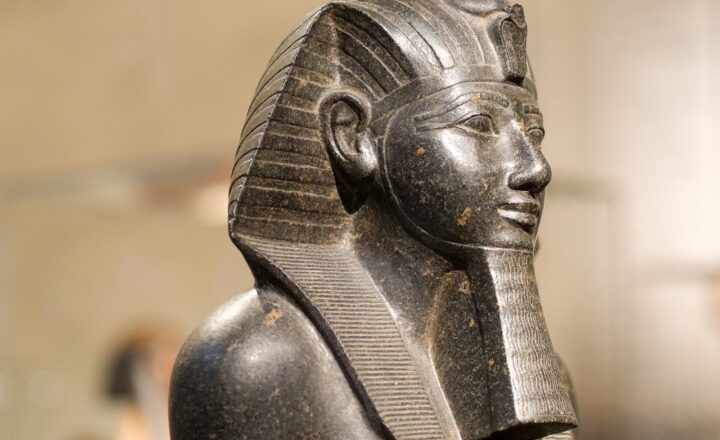
Throughout history, tales of cunning and deception have captivated us, inspiring our imagination with drama and intrigue. One of the most fascinating stories from antiquity is that of Cleopatra VII, Egypt’s last active ruler, who managed to employ wit and audacity to capture the attention of the formidable Julius Caesar. The story goes that she smuggled herself into his palace, hidden in a rug, a remarkable tactic that would not only forge a crucial alliance but change the fate of Egypt.
1. The Historical Context of Cleopatra and Caesar
The backdrop of this riveting story is the political tumult that characterized Egypt at the time. Cleopatra ascended the throne at a young age amid a civil war, which pitted her against her brother Ptolemy XIII. As she sought to secure her reign and ensure the survival of her dynasty, the young queen recognized the potential for a strategic alliance with Rome, the dominant power in the Mediterranean.
Julius Caesar, a seasoned leader and general, was in Egypt following a military campaign against the Kingdom of Pontus. His arrival was pivotal; Egypt was both a valuable ally and a bargaining chip in the political theater of the time. Cleopatra’s interests aligned with Caesar’s need for support to maintain his influence in the Eastern Mediterranean.
2. The Ingenious Plan to Meet Caesar
The relationship between Cleopatra and Caesar began in earnest after the queen recognized that direct negotiation was essential for her political survival. However, given the tensions in her court and the dangers posed by her brother’s loyalists, a straightforward meeting would have been perilous. Instead, Cleopatra devised a clever plan to enter Caesar’s palace undetected.
According to legend, she had herself rolled up in a luxurious rug—or a bedroll, depending on the version of the story—delivered directly to Caesar’s presence. This audacious maneuver reflects not just bravery but also an understanding of the dramatic flair that characterized both her personality and her reign. It seized both the opportunity for an unexpected entrance and a theatrical display of her resolve.
3. The Meeting: A Historic Encounter
When the rug was presented to Caesar, the guards would have been startled when Cleopatra emerged—an unexpected guest in what should have been his private quarters. It is said that upon her emergence, she was not just a figure; she was a living symbol of Egypt’s might and allure. Caesar, captivated by her intelligence, beauty, and charisma, was reportedly fascinated by this bold display.
Their conversations—likely infused with political strategy, cultural exchange, and mutual fascination—culminated in a powerful alliance. Cleopatra, skilled in persuasion, charmed Caesar, leading to both personal and political alignments that would secure her reign and influence the course of Roman politics.
4. Political Ramifications of Their Union
The meeting not only solidified Cleopatra’s position but also led to significant consequences for Rome. Their relationship produced a son, Ptolemy Caesar, commonly referred to as Caesarion, who Cleopatra positioned as the rightful heir to both the Egyptian and Roman thrones.
However, their union did not come without challenges. The political stakes were high as tensions swelled back in Rome. Caesar’s opponents, especially the Senate, viewed any alliance with Cleopatra with suspicion and animosity. Despite their powerful relationship, challenges brewed that would ultimately lead to consequences for both leaders.
5. The Legacy of Cleopatra’s Deception
The story of Cleopatra entering Caesar’s palace in a rug has gone down in history not merely as a tale of romance and intrigue but as emblematic of her political acumen. Cleopatra understood the importance of image and narrative; she crafted her identity as a clever and formidable leader. In her actions, she demonstrated that personal relationships could influence political outcomes dramatically.
This event has since inspired countless interpretations in literature, art, and theater, continually fascinating historians and audiences alike. The imagery of Cleopatra, enigmatic and powerful, rolling into Caesar’s chambers even resonates in modern popular culture, underscoring the timeless qualities of passion, ambition, and cunning.
Conclusion
The story of how Cleopatra smuggled herself into Caesar’s palace in a rug continues to captivate our imagination, offering insights not only into the politics of ancient Egypt and Rome but also into the timeless art of persuasion. Cleopatra emerged not just as a queen who sought power but as a woman who wielded intelligence and charisma strategically for her survival and the empowerment of her people.
This remarkable act of subterfuge captures the essence of Cleopatra’s legacy—marked by her unwavering resolve, innovative strategies for leadership, and profound impact on history that still echoes in our collective consciousness today.







